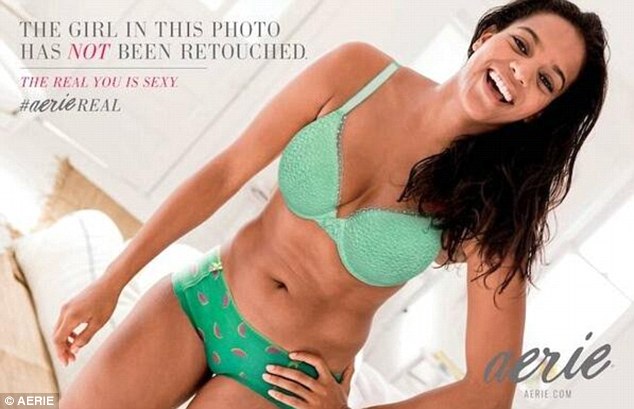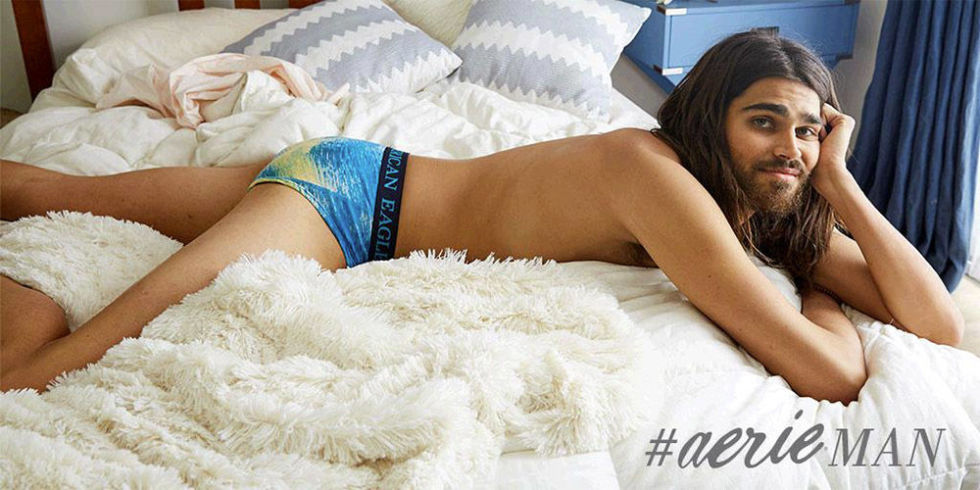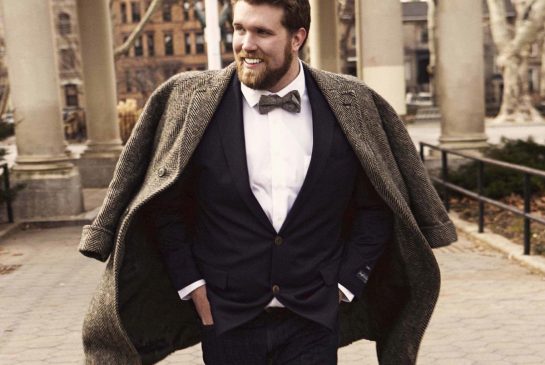On March 24, Aerie released this ad.
They followed it up with a series of (somewhat silly) profiles of different men. Some were dressed in just underwear. Another was in a bathtub. One was doing yoga. But it didn’t really matter what they were doing and how they were dressed. What mattered was that each one was talking about feeling comfortable in their own skin.
Only one had a six pack. One was tall and skinny. Another was slightly overweight. Despite their different bodies, each one talked about accepting and loving themselves.
And it was all a joke. Aerie released a statement saying that the ads were “all in good fun to parody the #AerieReal campaign,” which was launched last year with the promise that Aerie would stop using supermodels and retouching photos to promote body positivity. The ads were created to announce that Aerie would stop retouching men’s underwear and swimsuit photos.
That’s great, Aerie, but don’t you think there was a better way of doing that, rather than making a joke out of it?
We seem to have been making great headway in the world of body image (depending on who you ask) in the past few years. Just the idea that Aerie would launch a campaign that declares, “The real you is sexy” is a step in the right direction. But then, why did it feel the need to announce it would stop retouching men nearly a full year after it announced that it would stop using supermodels. Aerie creates clothing for both men and women, so why is this serious?

Photo courtesy of aerie.com
But this is a joke?

Photo courtesy of cosmopolitan.co.uk
There’s no anthem that says it’s cool for men to have curves. Or that it’s okay that they don’t have six packs and are very skinny. For everybody that says that girls develop body image issues from playing with Barbies at an impressionable age, we need to understand that little boys are just as impressionable. When they play with toys with eight packs and muscles the size of their heads, does it not affect them the way that Barbies affect girls?

Photo courtesy of xx4k.com
Only shortly before Aerie’s hoax, IMG introduced the world to fashion’s first male plus-size model. Zach Miko is the first model to be signed to IMG’s Brawn division, a division devoted entirely to plus-size men. Plus-size models for women date back to the 1970s. This year, Ashley Graham was the first plus-size model to be on the cover of Sports Illustrated Swimsuit Issue. Although she became a household name this year, she’s been working for Ford Models since 2003.

Photo courtesy of cleveland.com
Maybe Aerie wouldn’t be making jokes if they knew that ten percent of men who regularly frequent gyms were found to suffer from muscle dysmorphia, otherwise known as “bigorexia” or “reverse anorexia.” These men are more prone to abuse supplements or even steroids. They are also more likely to suffer depression or mania. They cut themselves off from family and friends to focus on getting the unattainable “perfect” body, never reaching their goals no matter how big they get.
Not all men believe that getting big is the secret to the “perfect” body though. Although anorexia and bulimia are often considered to be issues that are more for women, 10 million men in the United States will suffer from an eating disorder at some point in their lives.
All of these issues are dangerous to men, but for some reason we just can’t seem to take them seriously. The movement for body positivity isn’t yet fulfilling it’s goal. We need body positivity for all.


